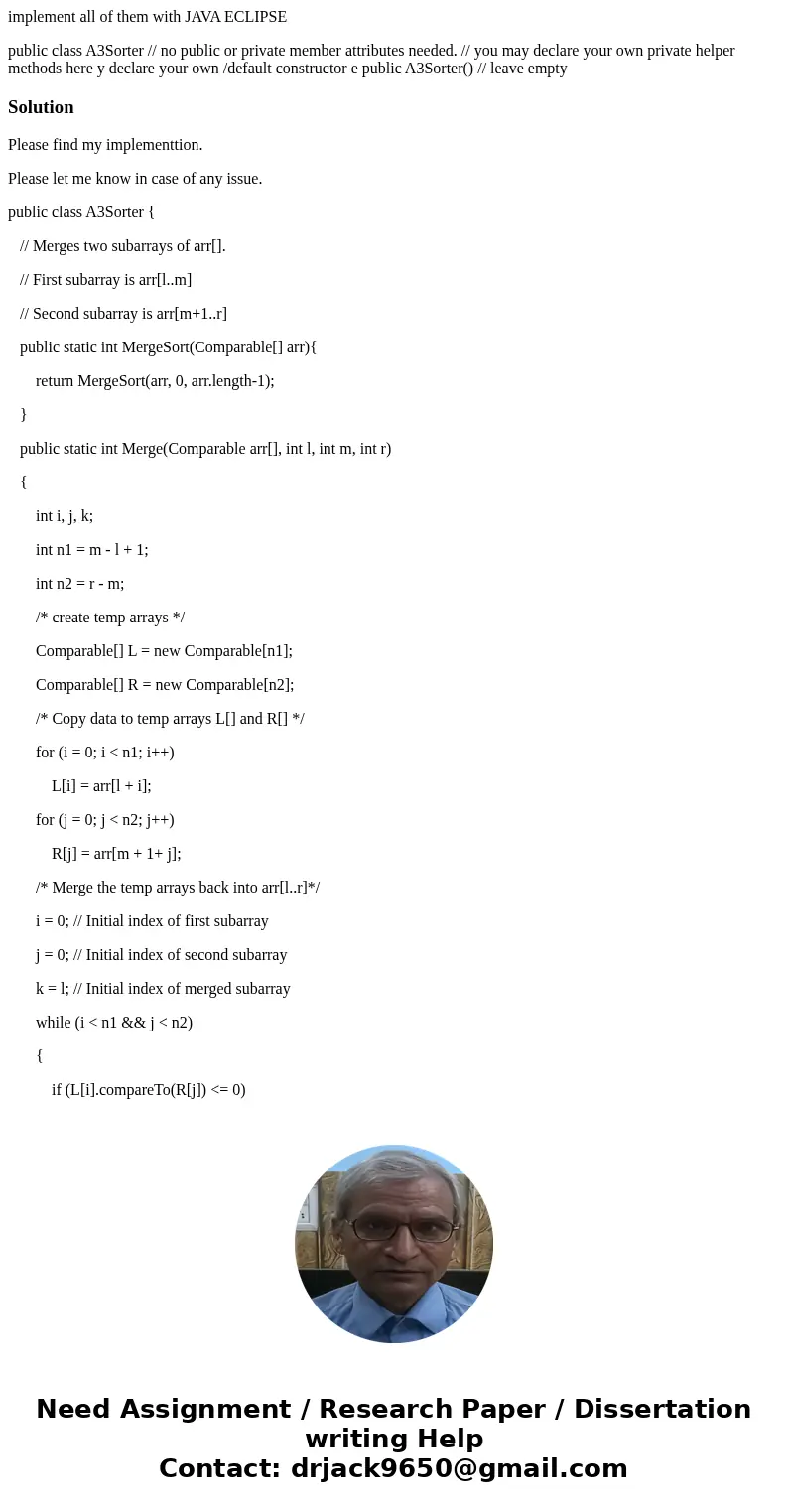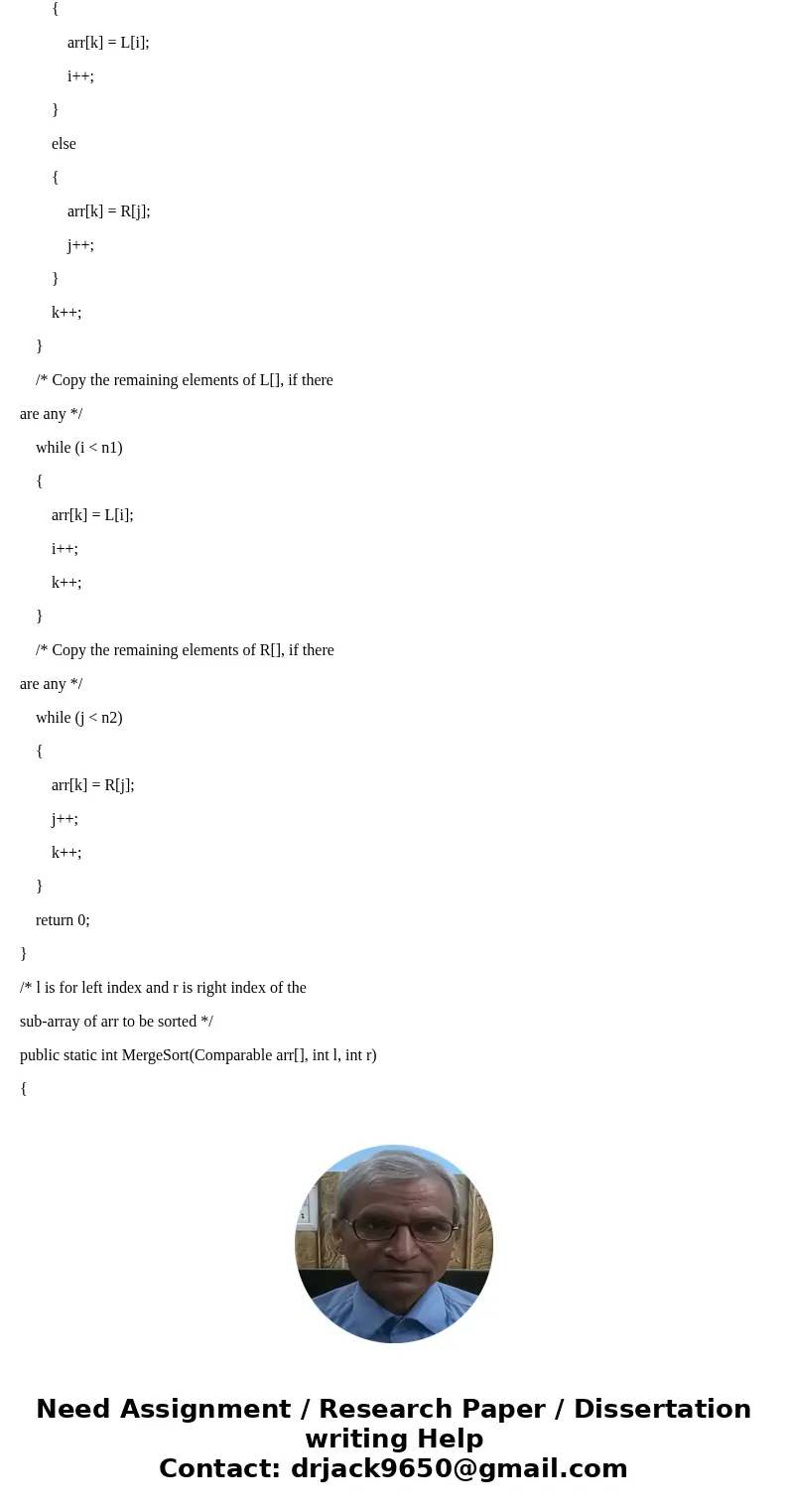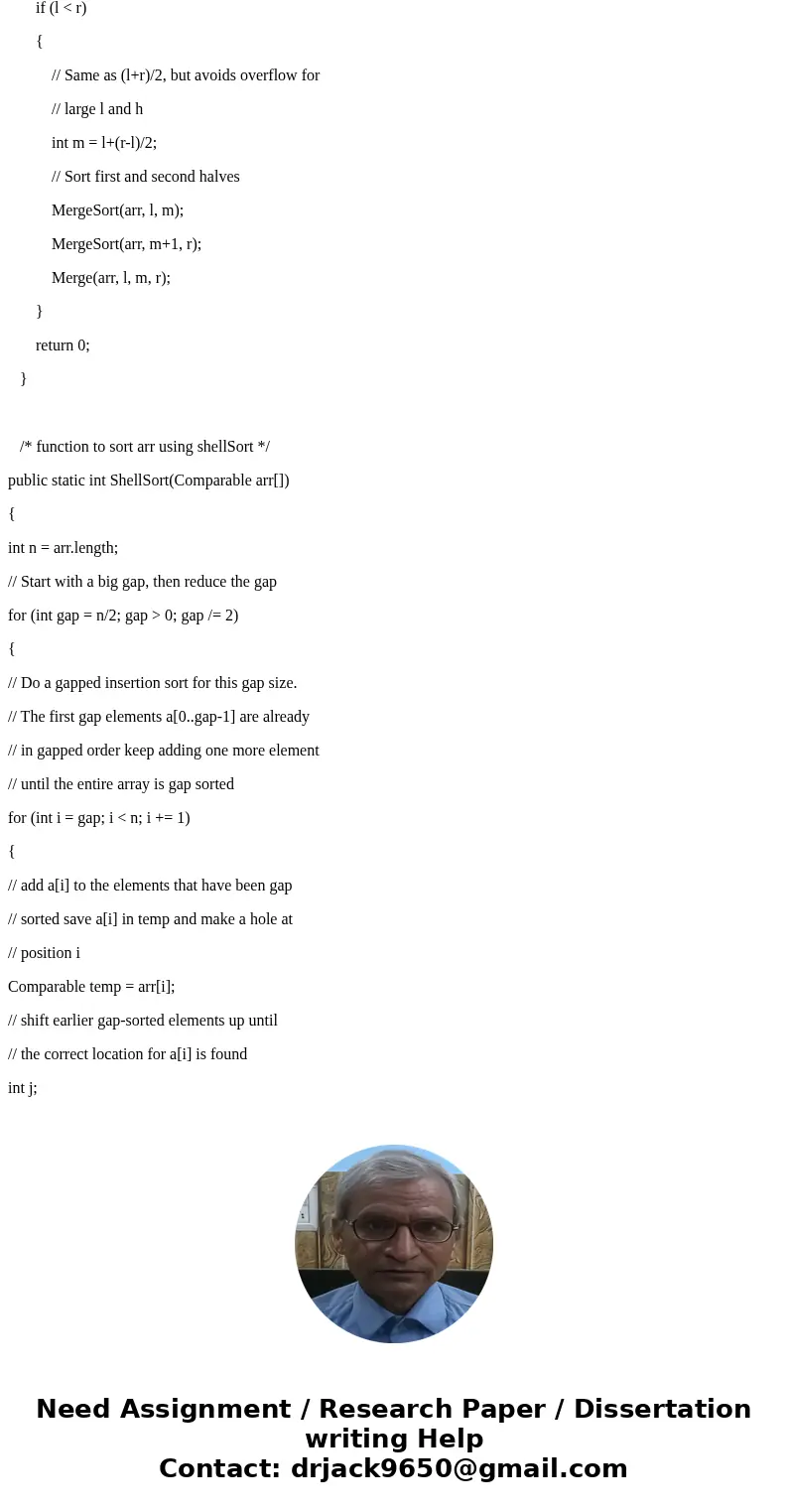implement all of them with JAVA ECLIPSE public class A3Sorte
implement all of them with JAVA ECLIPSE
public class A3Sorter // no public or private member attributes needed. // you may declare your own private helper methods here y declare your own /default constructor e public A3Sorter() // leave emptySolution
Please find my implementtion.
Please let me know in case of any issue.
public class A3Sorter {
// Merges two subarrays of arr[].
// First subarray is arr[l..m]
// Second subarray is arr[m+1..r]
public static int MergeSort(Comparable[] arr){
return MergeSort(arr, 0, arr.length-1);
}
public static int Merge(Comparable arr[], int l, int m, int r)
{
int i, j, k;
int n1 = m - l + 1;
int n2 = r - m;
/* create temp arrays */
Comparable[] L = new Comparable[n1];
Comparable[] R = new Comparable[n2];
/* Copy data to temp arrays L[] and R[] */
for (i = 0; i < n1; i++)
L[i] = arr[l + i];
for (j = 0; j < n2; j++)
R[j] = arr[m + 1+ j];
/* Merge the temp arrays back into arr[l..r]*/
i = 0; // Initial index of first subarray
j = 0; // Initial index of second subarray
k = l; // Initial index of merged subarray
while (i < n1 && j < n2)
{
if (L[i].compareTo(R[j]) <= 0)
{
arr[k] = L[i];
i++;
}
else
{
arr[k] = R[j];
j++;
}
k++;
}
/* Copy the remaining elements of L[], if there
are any */
while (i < n1)
{
arr[k] = L[i];
i++;
k++;
}
/* Copy the remaining elements of R[], if there
are any */
while (j < n2)
{
arr[k] = R[j];
j++;
k++;
}
return 0;
}
/* l is for left index and r is right index of the
sub-array of arr to be sorted */
public static int MergeSort(Comparable arr[], int l, int r)
{
if (l < r)
{
// Same as (l+r)/2, but avoids overflow for
// large l and h
int m = l+(r-l)/2;
// Sort first and second halves
MergeSort(arr, l, m);
MergeSort(arr, m+1, r);
Merge(arr, l, m, r);
}
return 0;
}
/* function to sort arr using shellSort */
public static int ShellSort(Comparable arr[])
{
int n = arr.length;
// Start with a big gap, then reduce the gap
for (int gap = n/2; gap > 0; gap /= 2)
{
// Do a gapped insertion sort for this gap size.
// The first gap elements a[0..gap-1] are already
// in gapped order keep adding one more element
// until the entire array is gap sorted
for (int i = gap; i < n; i += 1)
{
// add a[i] to the elements that have been gap
// sorted save a[i] in temp and make a hole at
// position i
Comparable temp = arr[i];
// shift earlier gap-sorted elements up until
// the correct location for a[i] is found
int j;
for (j = i; j >= gap && (arr[j - gap].compareTo(temp) > 0); j -= gap)
arr[j] = arr[j - gap];
// put temp (the original a[i]) in its correct
// location
arr[j] = temp;
}
}
return 0;
}
}




 Homework Sourse
Homework Sourse